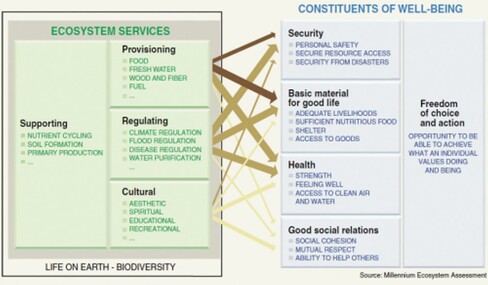The state-of-the-art and prospects: economic valuation of ecosystem services in environmental impact assessment
Murray Patterson

|
Figure 2. Estimation of Consumers and Producers Surplus
for a Substitutable Ecosystem Service |
Figure 3. Estimation of Consumers and Producers Surplus
for a Non-Substitutable Ecosystem Service |